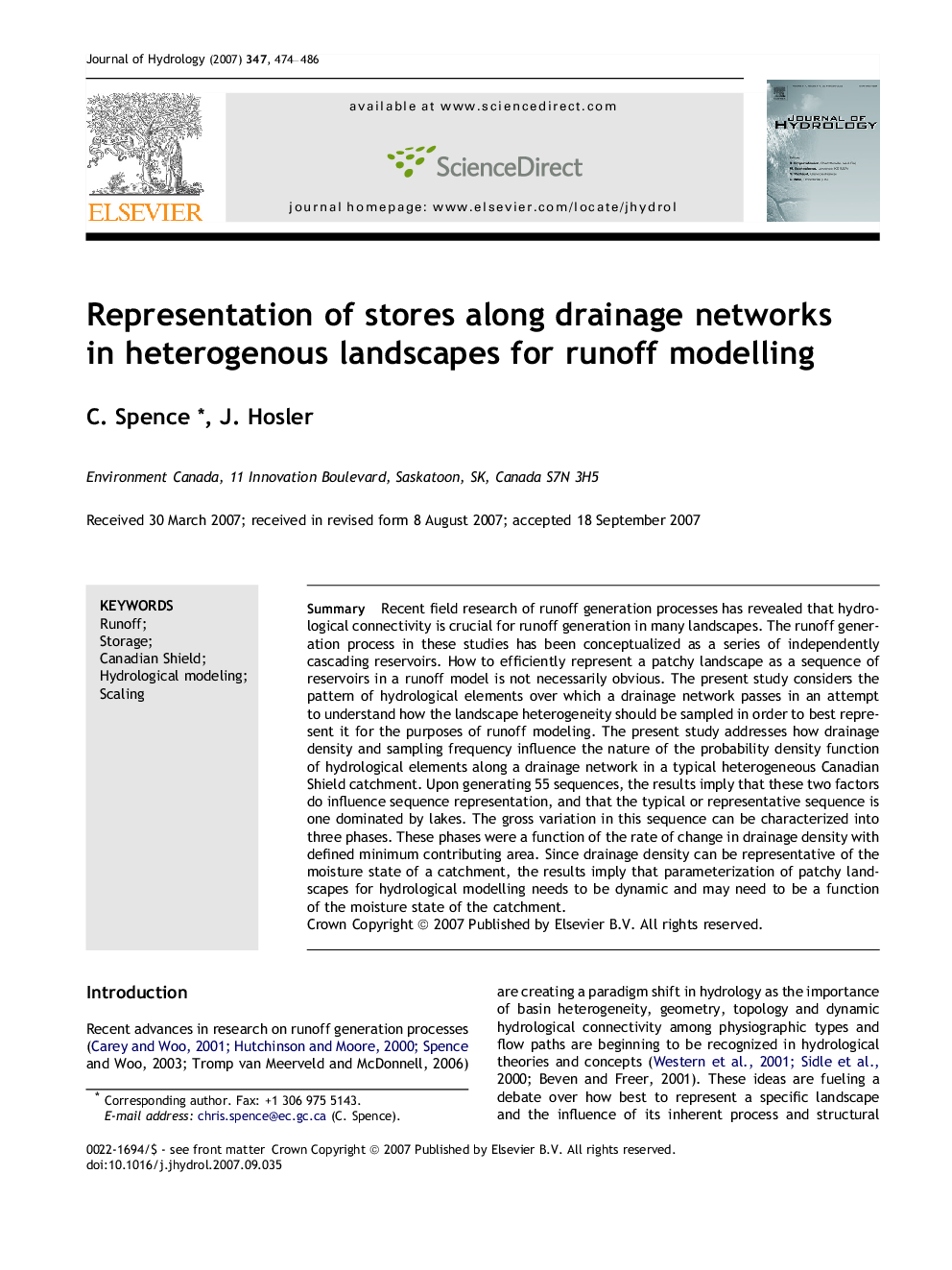| Article ID | Journal | Published Year | Pages | File Type |
|---|---|---|---|---|
| 4579584 | Journal of Hydrology | 2007 | 13 Pages |
SummaryRecent field research of runoff generation processes has revealed that hydrological connectivity is crucial for runoff generation in many landscapes. The runoff generation process in these studies has been conceptualized as a series of independently cascading reservoirs. How to efficiently represent a patchy landscape as a sequence of reservoirs in a runoff model is not necessarily obvious. The present study considers the pattern of hydrological elements over which a drainage network passes in an attempt to understand how the landscape heterogeneity should be sampled in order to best represent it for the purposes of runoff modeling. The present study addresses how drainage density and sampling frequency influence the nature of the probability density function of hydrological elements along a drainage network in a typical heterogeneous Canadian Shield catchment. Upon generating 55 sequences, the results imply that these two factors do influence sequence representation, and that the typical or representative sequence is one dominated by lakes. The gross variation in this sequence can be characterized into three phases. These phases were a function of the rate of change in drainage density with defined minimum contributing area. Since drainage density can be representative of the moisture state of a catchment, the results imply that parameterization of patchy landscapes for hydrological modelling needs to be dynamic and may need to be a function of the moisture state of the catchment.
